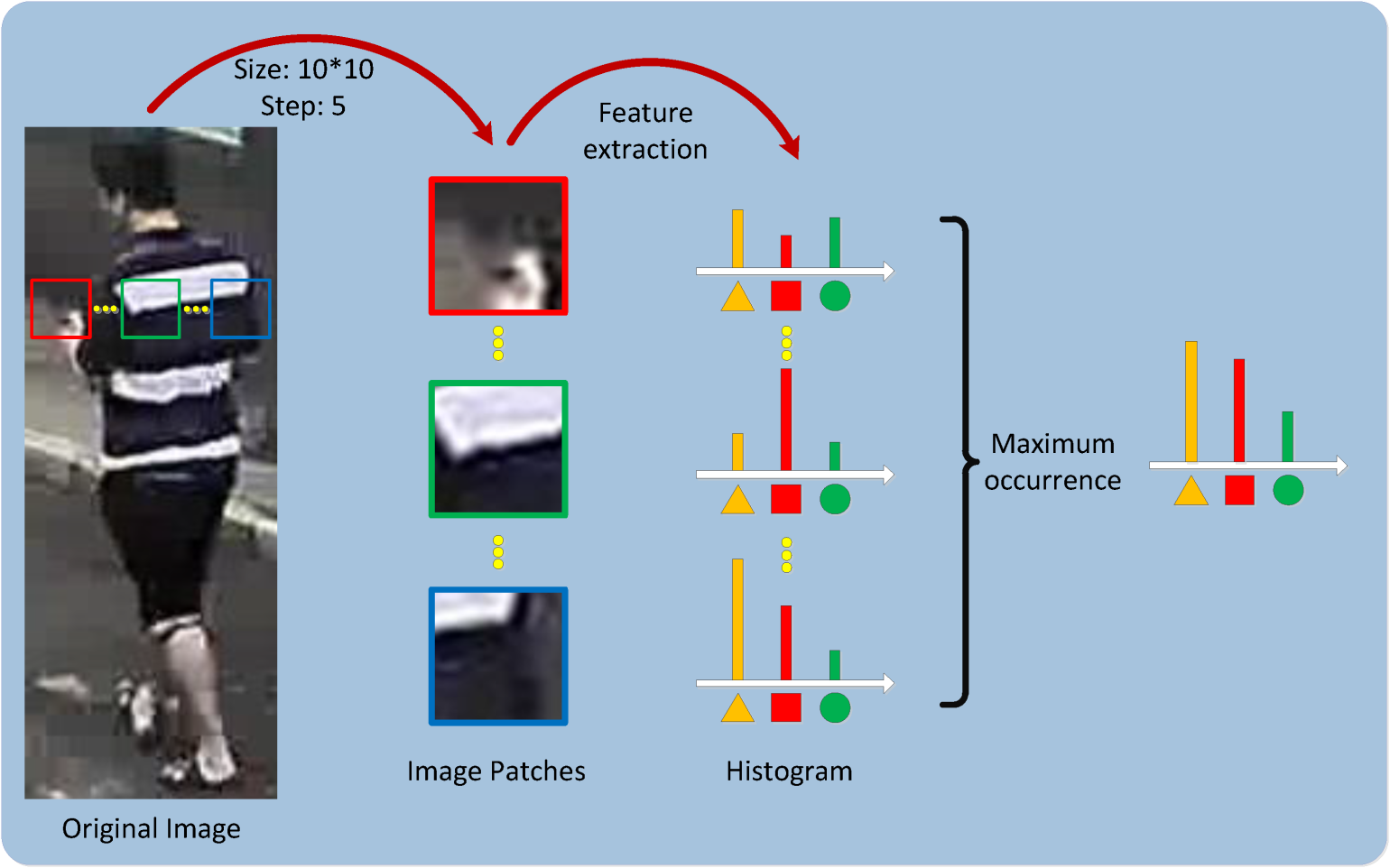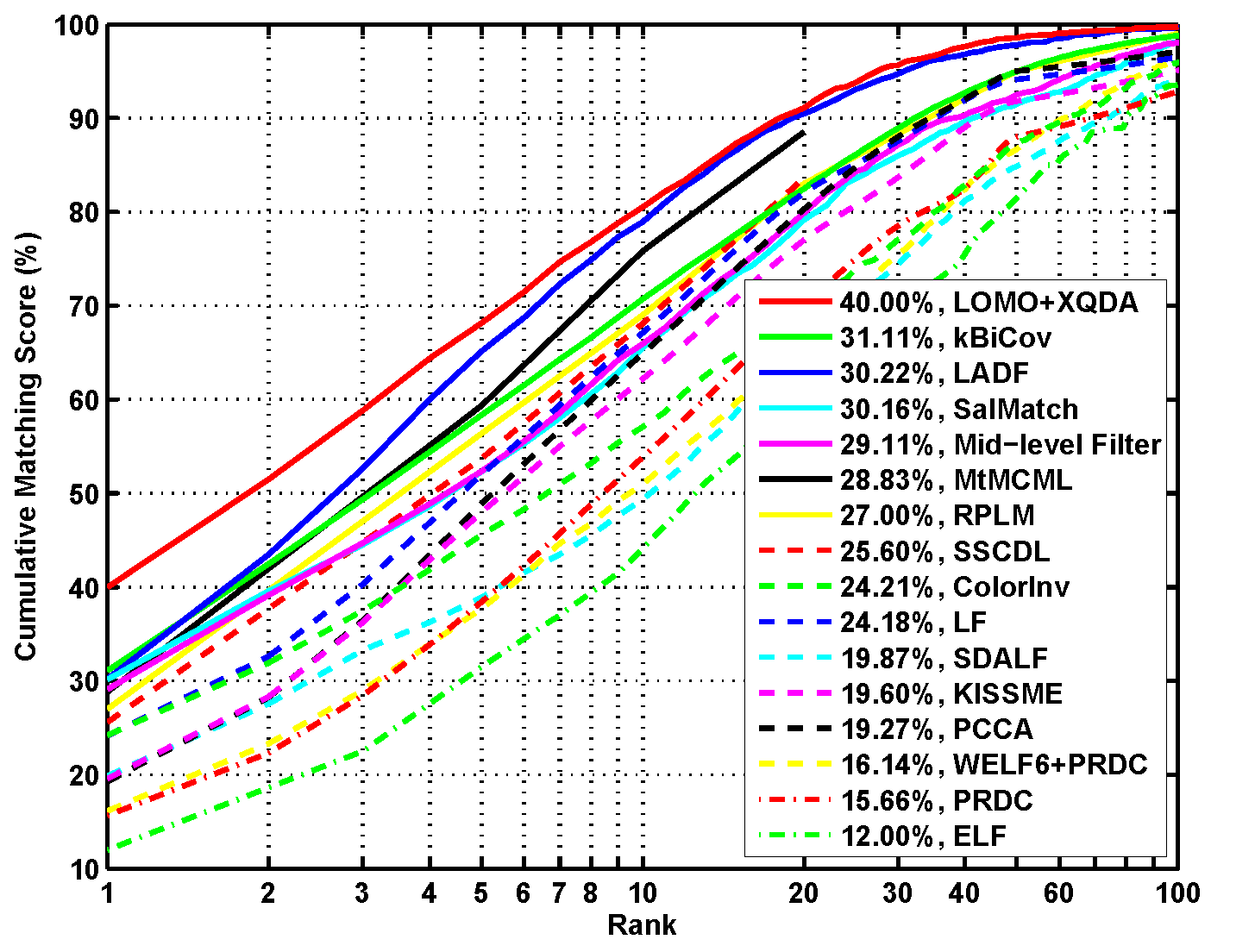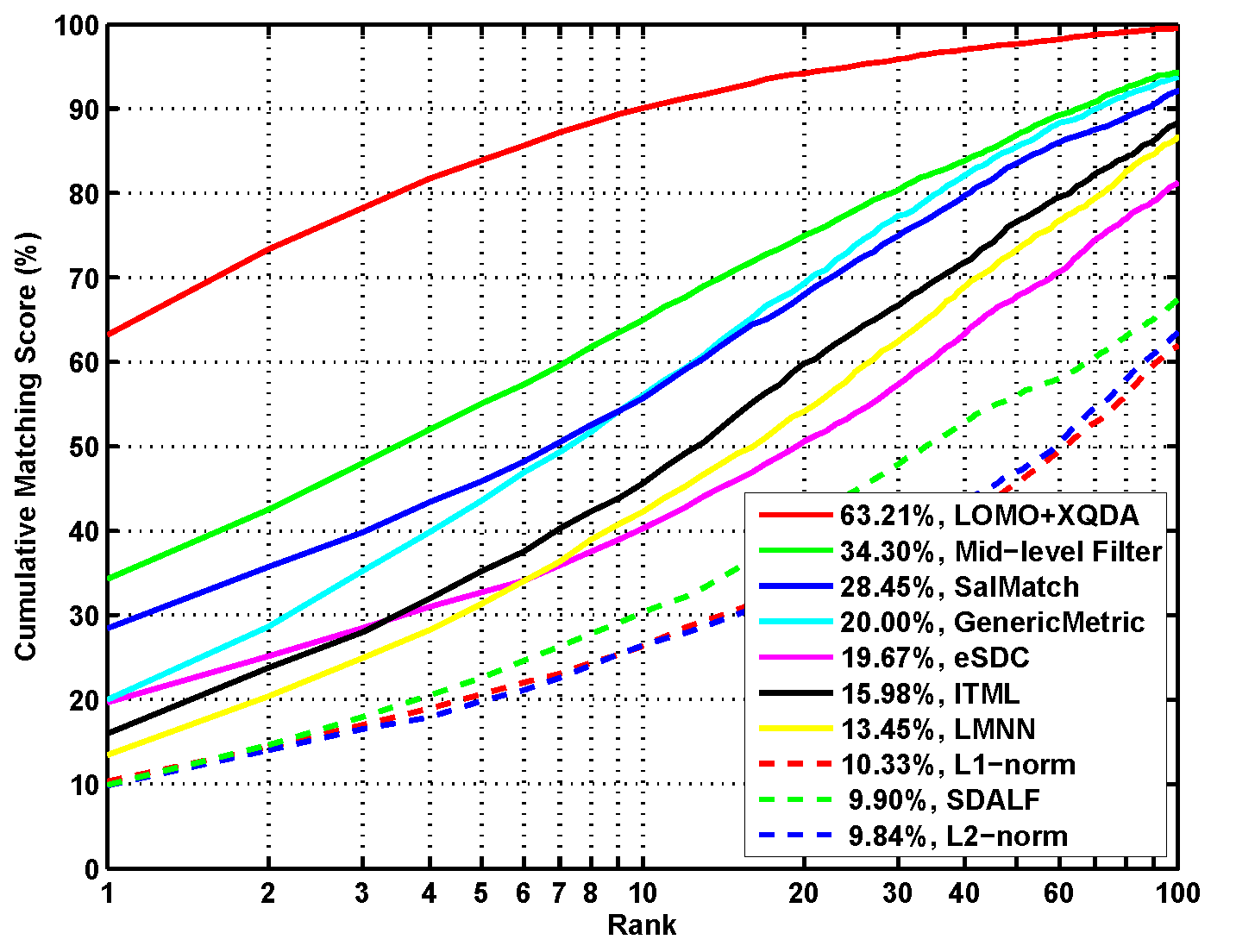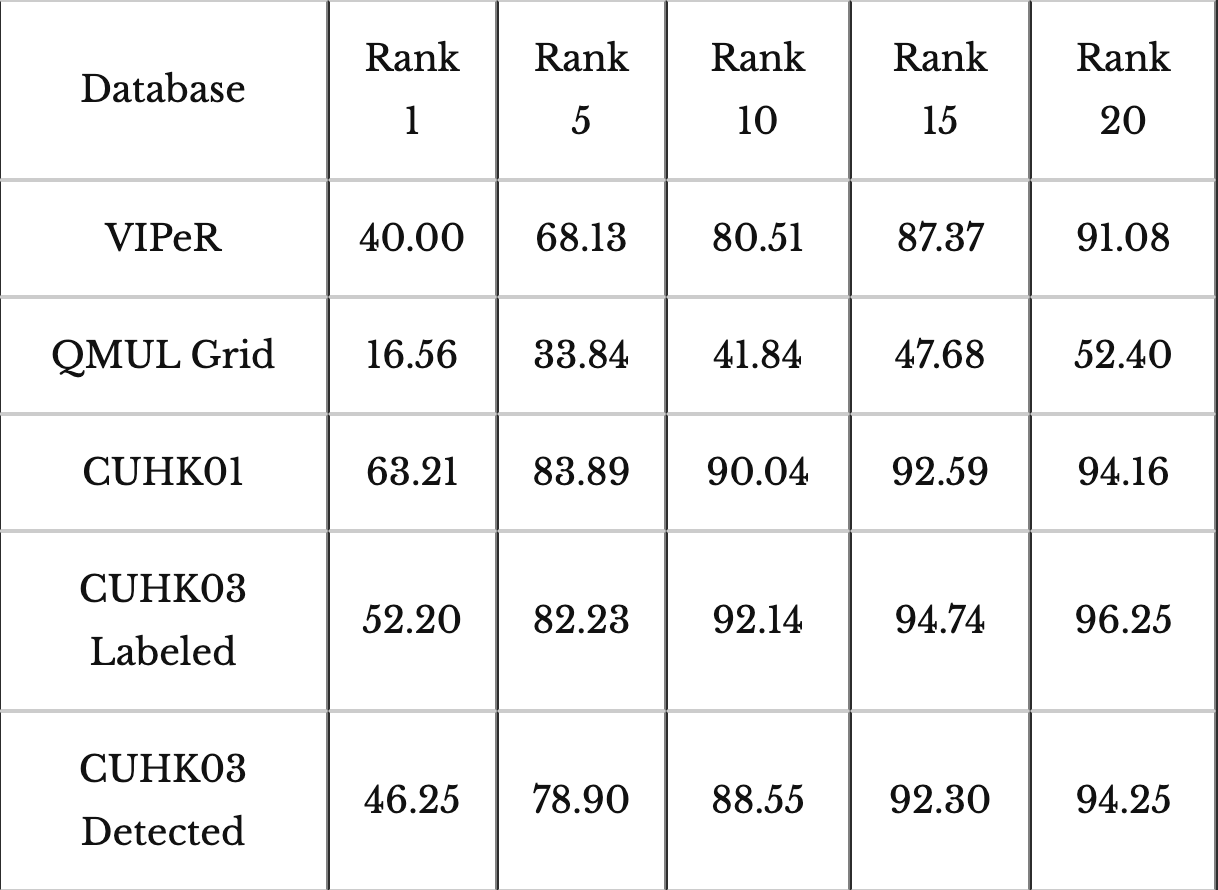

An effective feature representation called Local Maximal Occurrence (LOMO), and a subspace and metric learning method called Cross-view Quadratic Discriminant Analysis (XQDA) are proposed for person re-identification. The LOMO feature analyzes the horizontal occurrence of local features, and maximizes the occurrence to make a stable representation against viewpoint changes.

Besides, to handle illumination variations, we apply the Retinex transform and the Scale Invariant Local Ternary Pattern (SILTP). To learn a discriminant metric, we propose to learn a discriminant low dimensional subspace by cross-view quadratic discriminant analysis, and simultaneously, a QDA metric is learned on the derived subspace. We also present a practical computation method for XQDA, as well as its regularization. Experiments on four challenging person re-identification databases, VIPeR, QMUL GRID, CUHK Campus, and CUHK03, show that the proposed method improves the state-of-the-art rank-1 identification rates by 2.2\%, 4.88\%, 28.91\%, and 31.55\% on the four databases, respectively.
 CMC curves on the VIPeR database |
 CMC curves on the CUHK01 (CUHK Campus) database |

Note: the source code package contains the CMC curves for performance plot.

National Laboratory of Pattern Recognition, Institute of Automation, Chinese Academy of Sciences.
[1]Shengcai Liao, Yang Hu, Xiangyu Zhu, and Stan Z. Li, “Person Re-identification by Local Maximal Occurrence Representation and Metric Learning.” In IEEE International Conference on Computer Vision and Pattern Recognition, June 7-12, Boston, Massachusetts, USA, 2015. [pdf]
Last updated: May 7, 2015